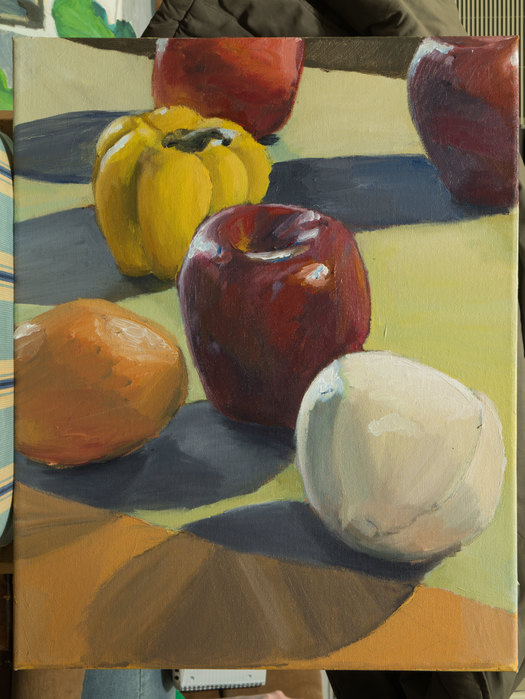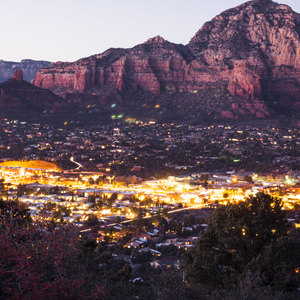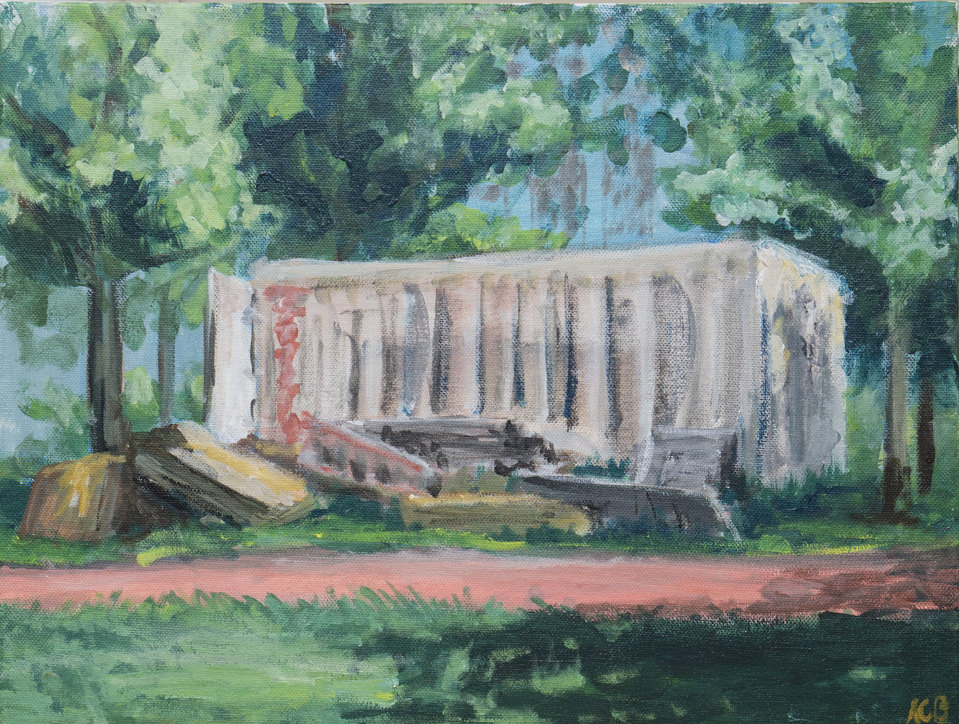Starting in the fall, I took Painting every term for my last year at Drexel. This gave me the opportunity to devote a lot of time to painting, and to get a load of great feedback from the professor, Bruce Pollock. I learned so much from this experience.
Painting I
Painting I consisted of entirely observational painting. It took me a while to get back into the swing of things, because the last time I had spent a lot of time seriously trying to paint was high school. Most of the paintings that we did in class were short studies on canvas pad. These two, were on canvases and spanned several classes each. Understanding light and how to abbreviate detail into the painting were the two key aspects that we focused on. After enjoying myself so much, I decided to take painting II the next term.

We did many still life studies of fruits and vegetables. This one was our midterm, and was painted on a canvas over the course of two days.

Another assignment was to paint a view of a certain part of the building where we had class. Many people chose the hallways, so I thought I could get an interesting deviation by choosing somewhere else. I found that the stairwells were very moody, with a lot of variations of color from the different materials present. The light shining through the archway was very dramatic, though I had to try to capture it all based on my memory of the first day, as the rest of the work days were overcast or rainy.
Painting II
Painting II was a lot more personally driven, with several large projects, and unspecific prompts. This led to a lot of creative exploration on my part.

Our first project was still observational, but we were allowed to arrange our own still life and bring in our own objects. For Painting I, I felt that I had really figured out how to paint a nice apple, so I bought a whole bushel and arranged them all over my scene, along with a couple other items. The cloth was challenging, and I don’t think I got the candlesticks quite right, but the fruit came out very nice in the end.

The next project was a landscape, painted from a photograph. I did not want to just emulate a photographer’s work, so I ended up roughly combining several photographs together in Photoshop and taking a large amount of artistic liberty with the subject. The scale of all of the parts of this piece was very important, as I wanted it to appear otherworldly. The cairn had to be made up of megalithic stones, in a way that would be very difficult for humans to build. The dramatic landscape of the fjord also had to be believably scaled, and communicate as the sides of a cliff, even with the top cropped out of the picture.

After exploring painting from a photograph in the last project, we moved on to paint a portrait from a photograph. I choose to combine a photograph of the actor Willem Defoe, with an early 19th century portrait photograph. I wanted to both parody these portraits by making it absurdly eerie and to reference the portrait of Willem Defoe’s Norman Osborn that speaks to James Franco’s Harry Osborn in Sam Raimi’s Spider-Man 3. I am not really a portrait artist, and I finished the portrait to the degree I cared to very quickly, and spent the rest of the time on the wainscotting and filigree. I even inserted a couple Green Goblins into the mix.

For Painting II’s final assignment, deciding what to create was a dilemma. The assignment was an abstract piece, but that left many many options to choose from. At the same time, I was in a photography class. In that class, I had produced several prints of buildings around Philadelphia, take in an abstract way to coincide with the assignment themes (positive and negative space, volume, etc…). Combining these two classes sounded like a good idea, and I picked this image that I had shot with a telephoto lens which pulled buildings together across four or so blocks. I made the colors vibrant and saturated, with each building having it’s own scheme. I wrapped it all with telephone wires, in defiance of the typical removal of such blemishes from architectural artwork.
Painting III
After Painting II, I was unsure that I would go on to Painting III, and a schedule conflict prevented me from doing so. However, I made up my mind that I should stick it out and finish the year. I was able to work out an independent study with the professor that would let me show up to class at different times, during other painting classes, and use the studio quietly in the back. Painting III is a very self-directed course, so this approach fit fairly well. I self-directed myself to paint landscapes, including at least one en plein air.

This painting was taken from a photograph that I had shot of the beautiful city of Sedona in my homeland of Arizona. Visiting my friend who lives there, we drove up the airport mesa (Yes, they have their airport on top of a mesa) around sunset. The lights of the city lit up on the floor of the valley, while the last rays of the sun illuminated the red cliffs behind. I was able to get my camera set up and took several long-exposure photographs of the city.

The painting presented some technical challenges, as, my professor is fond of pointing out, paintings are not photographs. Capturing the light on the rocks and the light of the city were my first priorities. The light of the city glares and spills everywhere in the photograph, but painting such a thing does not work as well.

My next painting was a very large 48″ x 36″ canvas that I picked up for a steal (not literal theft, around $30.00) from Plaza Art Supplies. The format drove me to try and make a larger, more dramatic landscape. It was a very time consuming process, and the size of the canvas required more physical effort than I had expected. While the canvas might have been cheap, I am sure I made up for it in the amount of paint expended. The painting is of a aspen forest on the back side of the San Fransisco Peaks, near Flagstaff, Arizona (my birthplace). I loved the way the aspens are turning to yellows in the fall and the surrounding pines remain a resolute green.

In a return to the fantasy landscape concept from Painting II, I created this from a Photoshop collage combined with a study of a model skull. He-Man’s Castle Grayskull always seemed like such a cool concept, a castle built on top of a giant skull, but I wanted to give it my own unique spin. I found a photograph from Scotland that had the mood I wanted as well as the eerie atmosphere, and weather. I shopped a skull onto it, but I couldn’t find a really good angle and picture. My professor offered that the department had several model skulls I could work with. This ended up working out really well, and I was able to start off the painting with a study of the Skull under lighting simulated to match the photograph, as well as hills made out of sheets of cloth. I did it mono-chromatically in raw sienna, so that I could focus on the form and the light. Then, I later painted in the hills and mountains around it, and glazed colors over the skull, to match with the rest of the painting.

This last painting was painted en plien air on a small, 12″ x 8″ canvas. I chose this plain storage shed because of the juxtaposition caused by it’s embedding in the trees around it. It had a lot of light and color to work with as well.
This year of painting really helped me to push my boundaries of what I could do with a brush and some acrylic pigment. It was certainly the highlight of my school week, most weeks, and it really did a lot to help me get through a demanding senior project. It was a nice break to work on creating something, that had nothing to do with the stress of senior project. Especially because it required minimal time with a computer. I am also very thankful for professor Pollock’s help and guidance, which I never would have gotten on my own.